
Technology real estate company Opendoor (NASDAQ: OPEN) announced better-than-expected revenue in Q1 CY2025, but sales fell by 2.4% year on year to $1.15 billion. Guidance for next quarter’s revenue was optimistic at $1.49 billion at the midpoint, 2.5% above analysts’ estimates. Its GAAP loss of $0.12 per share was 7.7% above analysts’ consensus estimates.
Is now the time to buy Opendoor? Find out by accessing our full research report, it’s free.
Opendoor (OPEN) Q1 CY2025 Highlights:
- Revenue: $1.15 billion vs analyst estimates of $1.05 billion (2.4% year-on-year decline, 9.3% beat)
- EPS (GAAP): -$0.12 vs analyst estimates of -$0.13 (7.7% beat)
- Adjusted EBITDA: -$30 million vs analyst estimates of -$44.02 million (-2.6% margin, 31.8% beat)
- Revenue Guidance for Q2 CY2025 is $1.49 billion at the midpoint, above analyst estimates of $1.45 billion
- EBITDA guidance for Q2 CY2025 is $15 million at the midpoint, above analyst estimates of -$12.29 million
- Operating Margin: -4.9%, up from -7.4% in the same quarter last year
- Free Cash Flow was -$283 million compared to -$186 million in the same quarter last year
- Homes Sold: 2,946, down 132 year on year
- Market Capitalization: $538.7 million
“We’ve spent the last decade building a modern real estate platform—designed to deliver simplicity, certainty, and a customer-first experience. We entered 2025 with a clear plan to drive toward profitability while strengthening our product experience and platform. Our first-quarter results reflect disciplined execution: we improved Adjusted EBITDA and sharply reduced Adjusted Net Losses,” said Carrie Wheeler, CEO of Opendoor.
Company Overview
Founded by real estate guru Eric Wu, Opendoor (NASDAQ: OPEN) offers a technology-driven, convenient, and streamlined process to buy and sell homes.
Sales Growth
A company’s long-term sales performance can indicate its overall quality. Even a bad business can shine for one or two quarters, but a top-tier one grows for years. Unfortunately, Opendoor struggled to consistently increase demand as its $5.13 billion of sales for the trailing 12 months was close to its revenue five years ago. This wasn’t a great result and is a sign of poor business quality.
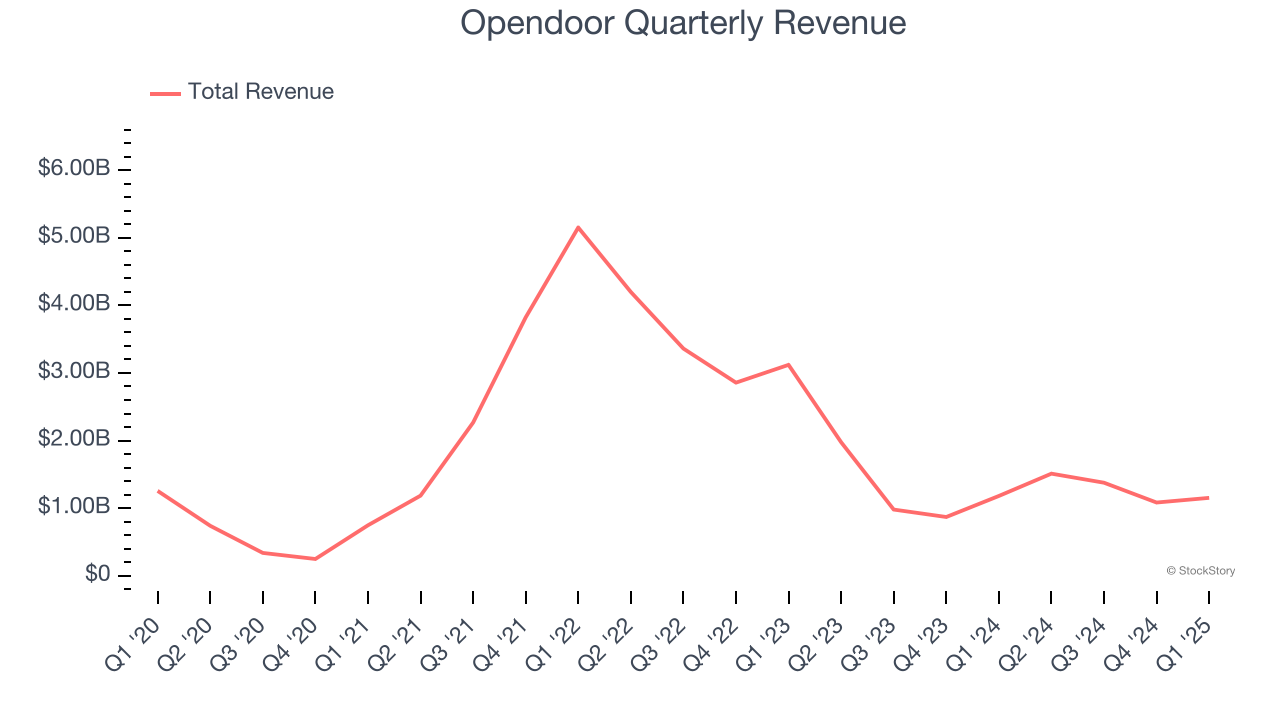
Long-term growth is the most important, but within consumer discretionary, product cycles are short and revenue can be hit-driven due to rapidly changing trends and consumer preferences. Opendoor’s recent performance shows its demand remained suppressed as its revenue has declined by 38.5% annually over the last two years. 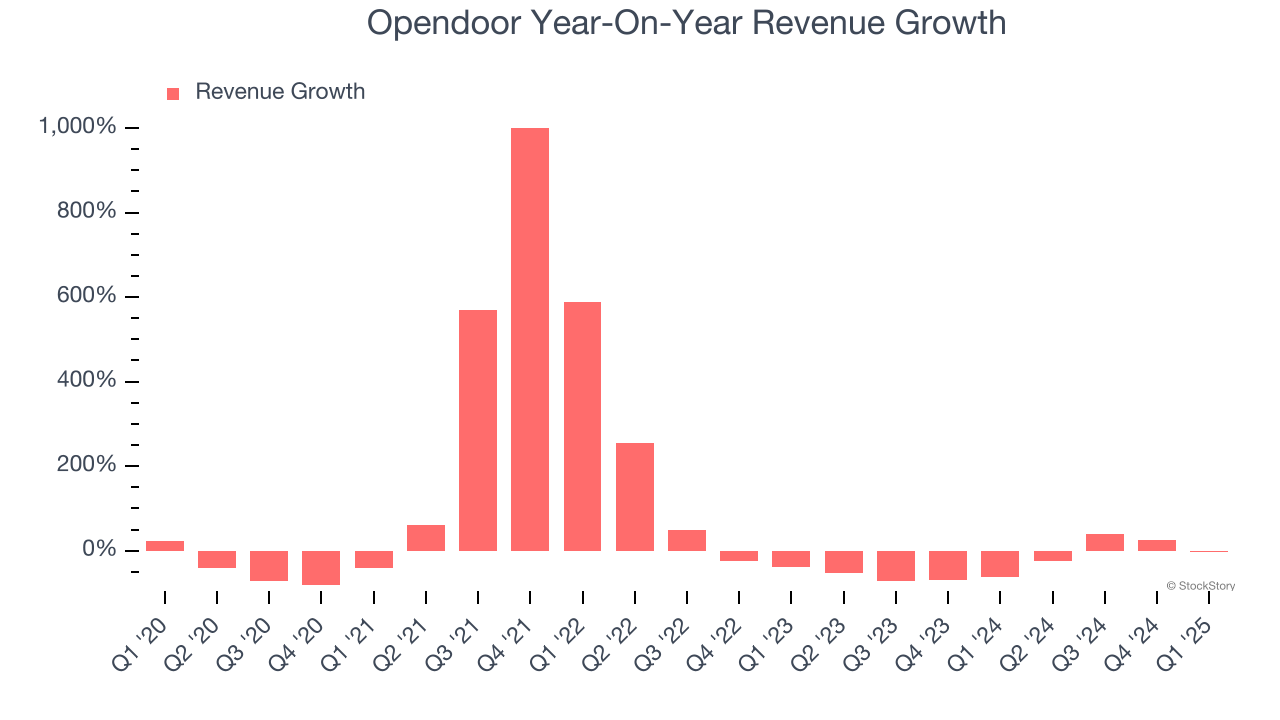
We can dig further into the company’s revenue dynamics by analyzing its number of homes sold, which reached 2,946 in the latest quarter. Over the last two years, Opendoor’s homes sold averaged 27.9% year-on-year declines. Because this number is higher than its revenue growth during the same period, we can see the company’s monetization has fallen. 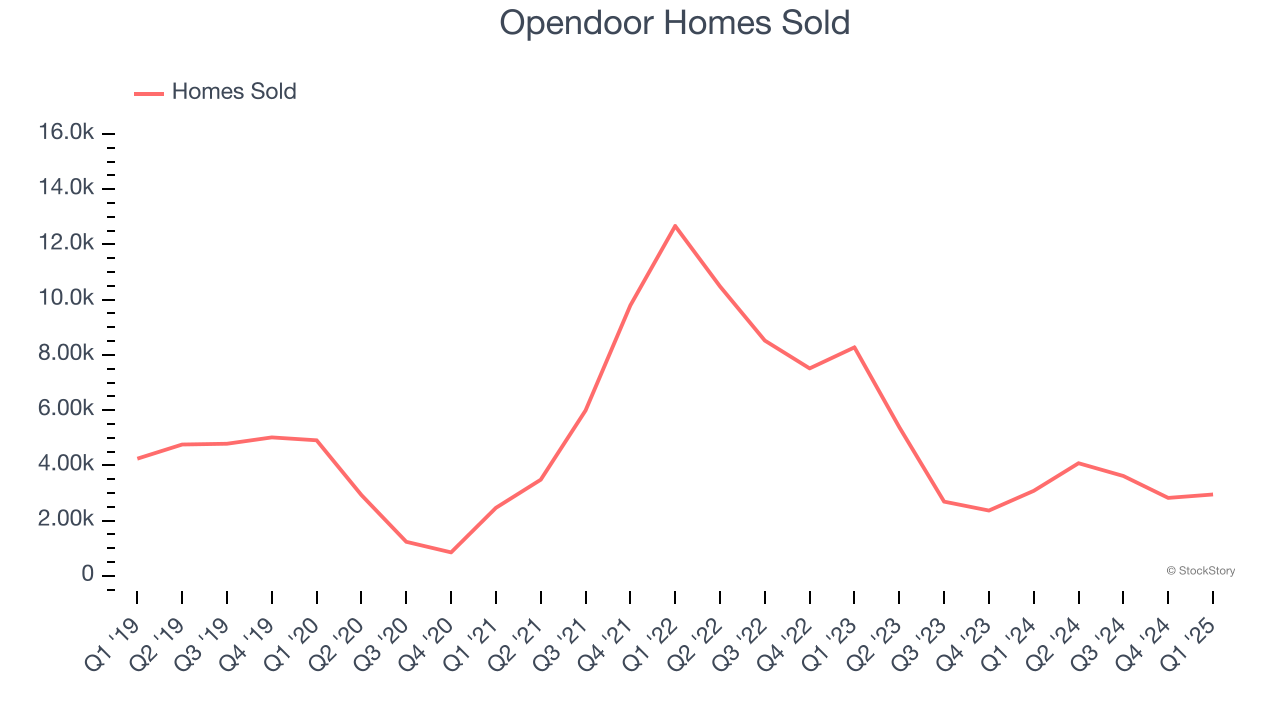
This quarter, Opendoor’s revenue fell by 2.4% year on year to $1.15 billion but beat Wall Street’s estimates by 9.3%. Company management is currently guiding for a 1.6% year-on-year decline in sales next quarter.
Looking further ahead, sell-side analysts expect revenue to grow 9.3% over the next 12 months. Although this projection implies its newer products and services will catalyze better top-line performance, it is still below the sector average.
Software is eating the world and there is virtually no industry left that has been untouched by it. That drives increasing demand for tools helping software developers do their jobs, whether it be monitoring critical cloud infrastructure, integrating audio and video functionality, or ensuring smooth content streaming. Click here to access a free report on our 3 favorite stocks to play this generational megatrend.
Operating Margin
Operating margin is an important measure of profitability as it shows the portion of revenue left after accounting for all core expenses – everything from the cost of goods sold to advertising and wages. It’s also useful for comparing profitability across companies with different levels of debt and tax rates because it excludes interest and taxes.
Opendoor’s operating margin has been trending up over the last 12 months, but it still averaged negative 6.3% over the last two years. This is due to its large expense base and inefficient cost structure.
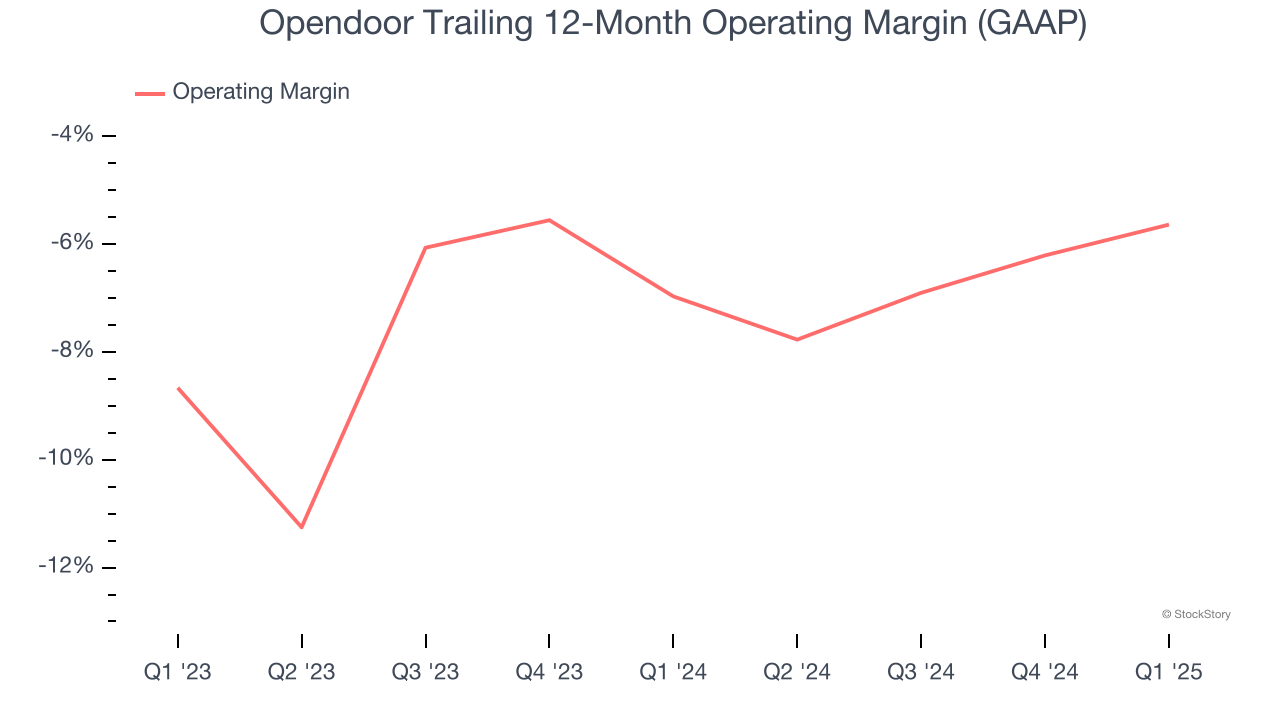
In Q1, Opendoor generated a negative 4.9% operating margin. The company's consistent lack of profits raise a flag.
Earnings Per Share
Revenue trends explain a company’s historical growth, but the long-term change in earnings per share (EPS) points to the profitability of that growth – for example, a company could inflate its sales through excessive spending on advertising and promotions.
Although Opendoor’s full-year earnings are still negative, it reduced its losses and improved its EPS by 33.6% annually over the last five years. The next few quarters will be critical for assessing its long-term profitability.
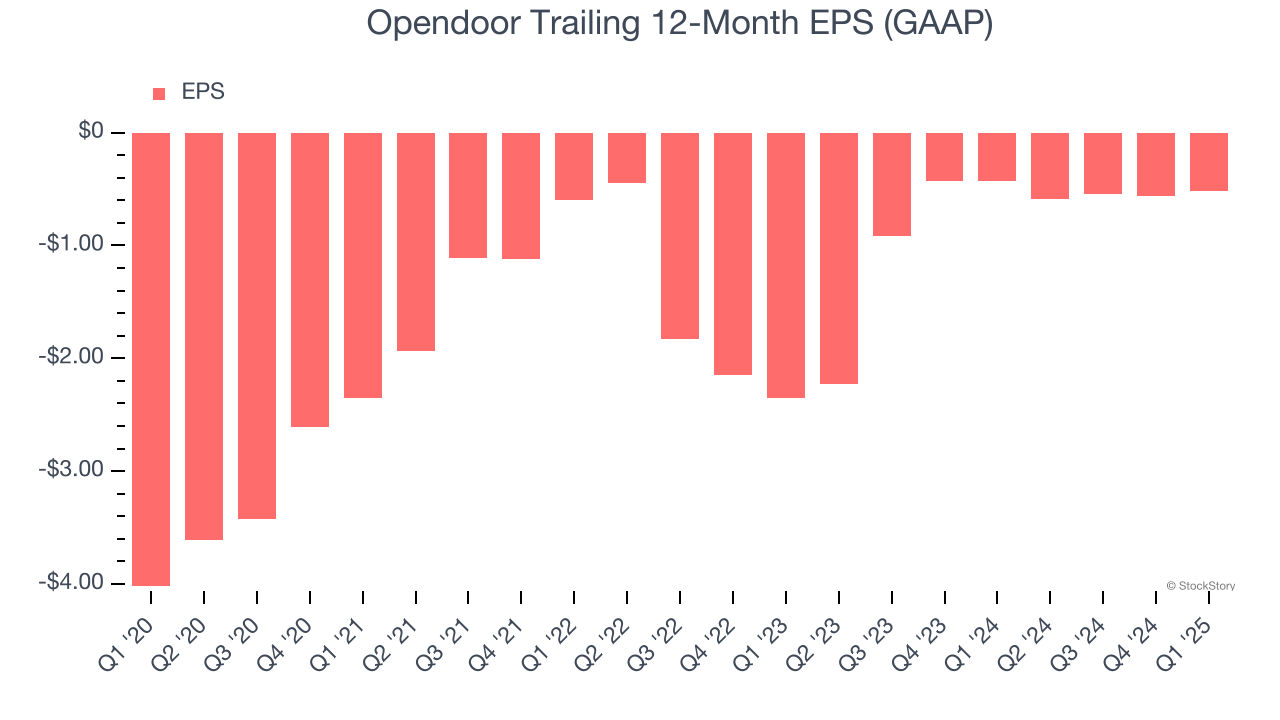
In Q1, Opendoor reported EPS at negative $0.12, up from negative $0.16 in the same quarter last year. This print beat analysts’ estimates by 7.7%. Over the next 12 months, Wall Street is optimistic. Analysts forecast Opendoor’s full-year EPS of negative $0.52 will reach break even.
Key Takeaways from Opendoor’s Q1 Results
We were impressed by Opendoor’s optimistic EBITDA guidance for next quarter, which blew past analysts’ expectations. We were also excited its EBITDA outperformed Wall Street’s estimates by a wide margin. Zooming out, we think this was a solid print. The stock traded up 8% to $0.76 immediately after reporting.
Opendoor had an encouraging quarter, but one earnings result doesn’t necessarily make the stock a buy. Let’s see if this is a good investment. When making that decision, it’s important to consider its valuation, business qualities, as well as what has happened in the latest quarter. We cover that in our actionable full research report which you can read here, it’s free.





